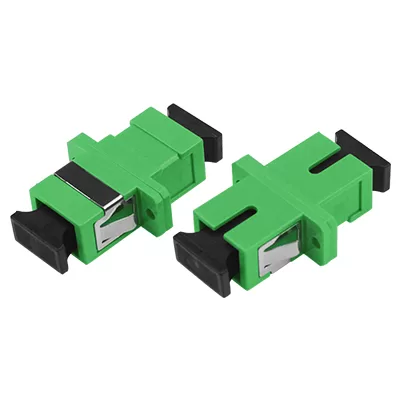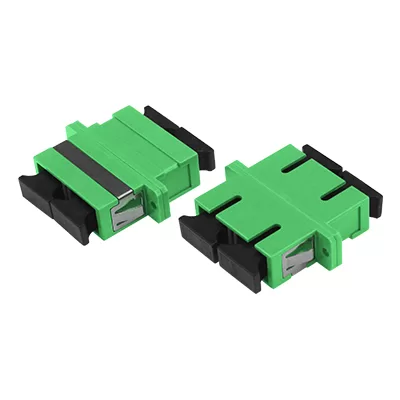Fiber optic adapters, also known as couplers, are essential components in connecting fiber optic cables and terminating fiber optic lines. They play a crucial role in ensuring a strong and efficient signal transmission. When it comes to SC/APC connectors, used for single-mode fiber applications, you’ll encounter two main configurations: simplex and duplex. But which one is right for your project?
Understanding Simplex vs. Duplex SC/APC Adapters

SC/APC Simplex Adapter: This adapter features a single SC/APC connector on each end, facilitating the connection between two individual fiber optic cables. It’s ideal for applications requiring a point-to-point connection, like connecting a transceiver to a patch cable.

SC/APC Duplex Adapter: This adapter comes equipped with two SC/APC connectors on either side, enabling the connection of two separate fiber optic cable pairs. It’s suitable for situations where you need to transmit and receive data simultaneously, like connecting network switches or data center equipment.
Here’s a table summarizing the key differences:
| Ciri | Simplex Adapter | Duplex Adapter |
|---|---|---|
| Number of SC/APC Connectors | 2 (one on each end) | 4 (two on each end) |
| Aplikasi | Point-to-point connections | Bi-directional data transmission |
Choosing Between Simplex and Duplex Adapters
The selection between simplex and duplex SC/APC adapters boils down to your specific network requirements:
- Go for simplex adapters if:
- You need to connect a single fiber optic cable to a transceiver or another device.
- You have a limited pathway space and require a more compact solution.
- Opt for duplex adapters if:
- You require bi-directional data transmission, like sending and receiving data simultaneously.
- You’re setting up a network connection between switches or data center equipment.
Additional Factors to Consider
- Flange vs. No-Flange: SC/APC adapters come in flanged and non-flanged options. Flanged adapters provide additional strength and stability for panel mounting, while non-flanged adapters offer a lower profile for tighter spaces.
- Insertion Loss: This refers to the signal power reduction when the adapter is inserted into the fiber optic line. Lower insertion loss is preferable for maintaining optimal signal strength. Look for adapters with an insertion loss specification (typically in dB).
- Durability: Consider the adapter’s mating cycle rating, which indicates the number of times the connector can be mated and de-mated without compromising performance.
By understanding the differences between simplex and duplex SC/APC adapters and considering these additional factors, you can make an informed decision that aligns with your specific network needs.
